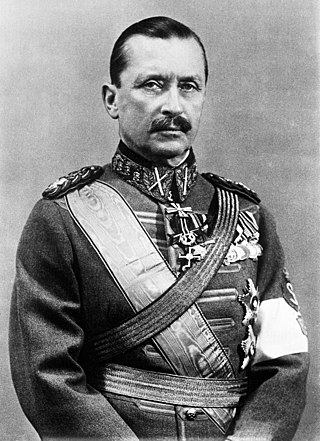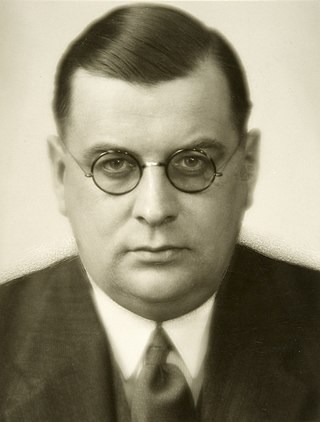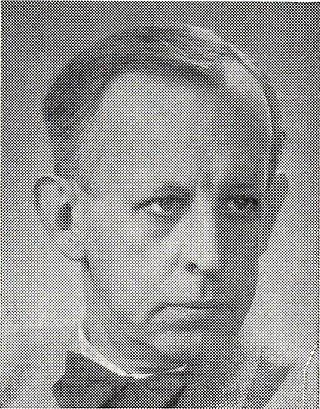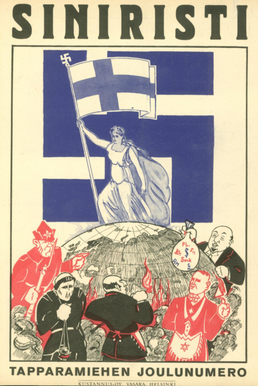Related Research Articles

Baron Carl Gustaf Emil Mannerheim was a Finnish military commander, aristocrat, and statesman. He served as the military leader of the Whites in the Finnish Civil War (1918), as Regent of Finland (1918–1919), as commander-in-chief of the Finnish Defence Forces during the period of World War II (1939–1945), and as the sixth president of Finland (1944–1946). He became Finland's only field marshal in 1933 and was appointed honorary Marshal of Finland in 1942.

Kaarlo Juho Ståhlberg was a Finnish jurist and academic who was one of the most important pioneers of republicanism in the country. He was the first president of Finland (1919–1925) and a liberal nationalist.

Prince Wolfgang of Hesse was the district administrator of Obertaunuskreis from 1933 to 1945.

Juho Eljas Erkko was a Finnish politician and journalist. He was a foreign minister and negotiated with the Soviet Union before the Winter War started. Erkko's father was politician and journalist Eero Erkko and son journalist Aatos Erkko.

Kustaa Ahmala was a Finnish factory worker, construction worker, journalist and politician, born in Lumijoki. He was a member of the Parliament of Finland from 1917 to 1918, representing the Social Democratic Party of Finland (SDP).

Reino Ala-Kulju was a Finnish Lutheran clergyman, secondary school teacher and politician, born in Kuortane. He was a member of the Parliament of Finland, representing the Patriotic People's Movement (IKL) from 1933 to 1939 and the National Coalition Party from 1952 to 1954 and from 1959 to 1966. Eveliina Ala-Kulju was his mother.

The Tammisaari camp was a concentration camp and prison in Dragsvik, Ekenäs in Finland. It was set for the Reds captured by the Whites in the 1918 Finnish Civil War. The concentration camp operated from May 1918 to 15 September 1918 when the majority of the captured Reds were released on parole. Tammisaari camp was then turned into a forced labour camp for convicted Reds and later in the early 1920s into a facility for political prisoners. Tammisaari camp was known as the most notorious of all Finnish Civil War prison camps. Between May and September 1918 nearly 3,000 of the 8,700 prisoners died of executions, disease or malnutrition.

Hans Kalm was an Estonian soldier who served in the armies of Russian Empire, Finland and Estonia. He was also a homeopath and naturopath who took an interest in alternative medicine.

Georg Achates Gripenberg was a Finnish diplomat. He served as an Envoy of Finland to London in 1933–1941 and in Stockholm from 1943 to 1956 and as Finland's first Ambassador to the United Nations from 1956 to 1958.

Axel Örnulf Tigerstedt was a Finnish-Swedish poet, novelist, translator, journalist and a supporter of Nazism before and during the Second World War.
Severin Tsezarevich Dobrovolsky was a Russian White émigré, who lived after the Russian Civil War as a political refugee in Finland. He participated in the activities of several white emigrant organizations and published pro-fascist Russian-language magazines. Dobrovolsky was turned over to the Soviet Union in 1945, where he was sentenced to death and executed.

The Finnish People's Organisation was a bilingual Nazi party founded by Jaeger Captain Arvi Kalsta. Supporters of the movement were also called Kalstaites after the leader. The inaugural meeting of the organization was held in March 1933 and was attended by about 500 members. SKJ published the magazines Herää Suomi, Hakkorset and Hakaristi. In addition to its own magazines, the organization had its own publishing house Vasara. The organization wore a brown uniform like the Sturmabteilung of the German Nazi Party, and used the greeting "Finland Awake!"

Gunnar Isak Lindqvist was a Finnish Jäger and a senior lieutenant in the Estonian Army. He had received military training during the First World War as a Jäger and received his baptism of fire on the Eastern Front at Misse River in 1916. Later, he took part in the Finnish Civil War in the White Army as a signals officer and in the Estonian War of Independence as a battalion commander. During his life he served in the armies of three states and was a veteran of the six wars. In the 1930s and 1940s, Lindqvist took part in several Nazi groups.

Gunnar Emil von Hertzen was a Finnish Jaeger officer and the planner of the Aunus expedition (1919). He was a physician by profession and served as a physician during the Winter and Continuation Wars, becoming a lieutenant colonel in medical corps. He also took part in Nazi organisations in the 1930s and 1940s.

Vietti Brynolf Nykänen was a Finnish architect, writer and politician.
Stormers was a Finnish far-right party operating in the early 1930s, led by architect Vietti Nykänen.

Leo Harmaja was a Finnish economist and statistician and professor of economics.

Siniristi was a Finnish Nazi magazine published between 1931 and 1939 and published by Publishing Company Oy Vasara that was operated by Gunnar von Hertzen and Y. W. Jalander. Its material consisted mainly of anti-Semitic propaganda adopted from Nazi Germany. The authors of the magazine included the well-known Finnish-Swedish Nazi Thorvald Oljemark.
References
- ↑ "Eduskunta" . Retrieved 1 October 2014.